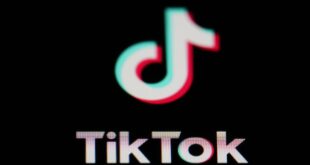In recent years, as Twitch fended off territorial incursions from YouTube, the livestreaming service did whatever it could to hang on to top performers: signing them to exorbitant, exclusive contracts, offering them favourable cuts of subscription revenue and even handing out free tickets to the Super Bowl.
Now under mounting pressure from its owner Amazon.com Inc to cut costs, the company’s new chief executive officer is testing out a less expensive way of strengthening its bond with the creative community – a cross-country, listening tour.
Since taking over in March, Dan Clancy, the platform’s new guitar-playing, folk-music-loving CEO, has been travelling around the US in a van, meeting with prominent celebrity streamers and lending an ear to their ideas and concerns.
Along the way, Clancy has gotten together with gamer Tyler “Ninja” Blevins and his wife at a Florida steakhouse. He has checked out rapper T-Pain’s elaborate PC setup at his Georgia mansion. On his personal Twitch account, he has livestreamed Bob Seger-infused jam sessions with influencers from the front seat of his van. And he has visited streamer Maya Higa’s animal sanctuary in Austin where he posed for photos alongside an emu.
“He asked a lot of questions about how it works, and how we use Twitch,” Higa said. “It feels like he wants to know everybody as a person, not just what their content is.”
The resulting feedback has been invaluable, Clancy said in a recent interview at TwitchCon, the annual convention in Las Vegas, even if he doesn’t take any particular streamer’s advice wholesale.
“It’s all input,” Clancy said. “So many people understand a problem. It doesn’t mean they understand the solution.”
Clancy, 59, is a theater and computer-science major turned engineer, who arrived at Twitch in 2019, following stops at NASA, Google and Nextdoor Holdings Inc. Earlier this year, he was promoted from president to CEO, taking over a culturally influential service that was recently valued by Needham & Co at US$45bil, yet has struggled with mounting expenses. Clancy said that even with its in-house discount on Amazon Web Services, operating a round-the-clock, international, livestreaming service is astronomically expensive.
From the start, Clancy turned his attention to Twitch’s creative community. In recent years, a number of rival platforms, most notably Alphabet Inc’s YouTube, have tried to lure away top Twitch performers with extremely lucrative contracts that could reach as high as eight figures. Twitch sometimes matched the rich offers while also striking generous deals under which many top acts retain 70% of the subscription revenue generated by their Twitch channels. Bidding wars broke out, and costs soared.
Eventually, under pressure from Amazon to improve its performance, Twitch executives started ramping up the amount of ads appearing on the platform. Creators, in turn, complained angrily that the commercials interrupted the livestreaming experience without offering them adequate compensation. All of which left Clancy grappling with a difficult challenge. How to mend the fraying relations with streamers while reining in the company’s spending?
For the past decade or so, former CEO Emmett Shear had spent the bulk of his time focusing on technological challenges while rarely interfacing with Twitch’s seven million monthly livestreamers, many of whom make a living off the platform. Therein, Clancy saw an opportunity. Soon he was firing up his Dodge Ram ProMaster and leaning into an all-out charm offensive. Over his four-week tour, titled “Dan in the Van”, Clancy met with more than 80 streamers across 15 cities.
“It’s easy for me. I’m outgoing,” Clancy said. “There’s a different world where I could have been a creator.”
A Twitch spokesperson said Shear “cared deeply about our creators”.
So far, Clancy’s hands-on approach is proving popular among many top streamers who in the past have accused the company of being out-of-touch with their interests. Clancy has given out his cell number to several influential performers who can now reach out to him directly if they have gripes or suggestions.
“What Dan is trying to do by building personal relationships with streamers will be a cornerstone of the turnaround of Twitch,” said Arpita Agnihotri, an associate professor of management at Penn State Harrisburg. “Twitch’s CEO needs to have a deeper understanding of the streamers’ problem.”
“Dan is bringing the empathy Twitch was missing for years back into the limelight,” Marcus “djWHEAT” Graham, a gaming executive who worked at Twitch until last year, recently wrote on X.
But others see Clancy’s glad handing as essentially a vanity project of dubious value for the company. “It’s clear he is enjoying all the love it’s getting for him personally,” said one former Twitch employee. Another pointed out that many of the unpopular changes to the platform, such as the increase in ad loads, were made when Clancy was president and oversaw several arms of the company.
Meanwhile, the unusual sight of a CEO of an Amazon-owned company livestreaming spontaneously for hours in a public forum is bound to raise some eyebrows, whether he’s playing songs like Country Roads on the piano to just 70 viewers or making an uncouth joke about urine.
As he throws himself headlong into Twitch’s creative habitat, Clancy is overhauling how the company compensates its talent. For starters, Twitch is phasing out special deals for exclusive livestreaming rights. Competing with YouTube for gaming talent, Clancy said, “created this bidding war, and I don’t think that’s a sustainable business”.
Not all of the changes have gone over smoothly. In June, Twitch revealed new guidelines limiting how streamers could display branded content. In response, some threatened a boycott. From his home in Washington, Clancy jumped on his personal Twitch stream and apologised. “The bottom line is we messed up,” he said. “It’s on us.”
Shortly thereafter, Twitch rolled back the proposal. Twitch also increased creators’ revenue share for ads in 2023, and after announcing it would reduce top streamers’ subscription revenue split from 70/30 to 50/50 last year, rolled out a new programme that allows some streamers to qualify for a 70/30 subscription revenue arrangement for up to US$100,000 in earnings.
By October, the masses appeared to have largely forgiven him. Throughout the weekend of events at TwitchCon, Clancy basked in the adulation of his livestreaming constituents, posing for selfies in a cowboy hat and accepting praise. During the convention, Twitch announced that for the first time it would begin letting users livestream simultaneously on other platforms, a crowd-pleasing move that many creators had been requesting for years.
At one point, wearing sunglasses and a floral, purple blazer, Clancy appeared on stage at a variety show where he proceeded to jokingly hand out vouchers for 70/30 revenue splits. Despite such quips, Clancy said he’s serious about implementing changes that will make Twitch a sustainable business for everyone.
“It’s our job to make sure this company is still here for 20, 30, 40, 50 years,” Clancy said.
He invoked the example of Ben “CohhCarnage” Cassell, a longtime Twitch streamer who has ridden the livestreaming craze well into middle age and now has three kids.
“He used to have a different life,” Clancy said. “But he can’t go back to that because – what does his resume look like?” – Bloomberg
 BeritaKini.biz Berita Viral Terkini di Malaysia
BeritaKini.biz Berita Viral Terkini di Malaysia





